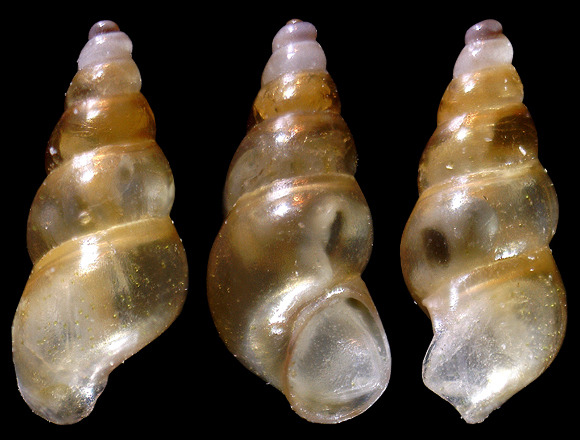(van der Linden & Wagner, 1987)

Grazer and detritus feeder in the infralittoral.
Original taxon: Cingula antipolitana.
« Fresh shells are transparent and colourless, older ones opaque and whitish. The top whorls are of the same transparency as the lower whorls. Most shells show brownish spots on the last, and often also on the penultimate whorl: two rows of narrow, rather long, longitudinal stripes, one near to the suture and one at some distance, almost parallel to the other. Some shells show some obscure brown spots on the other whorls. All have a, often comma-shaped, dark spot on the apex, and generally two brown spots, corresponding with the last two on the outer surface, are visible at the inside of the outerlip. There is no ornamental sculpture. There is no umbilicus. The largest specimens have about 4.5 whorls. The shell is rather cylindrical, resembling Pisinna. The edge of the aperture is rather solid. There is no labial rib. […] The suture is not very pronounced. Derivatio nominis: the new species is named after the city of Antibes, founded as Antipolis in the 5th-4th century B.C. by Greek merchants, a so far generally under-estimated locality for small marine gastropods. » – J. van den Linden, W. M. Wagner: «Cingula antipolitana spec. nov., a new marine gastropod species from southern France», Basteria 51, 1987, p.59.
3-6m deep, in offshore gardens made of small Posidonia patches in rough sand pockets on granitic substract, SW. end of Ghjunchitu Bay, Isola Rossa, NW. Corsica. 2,4mm.